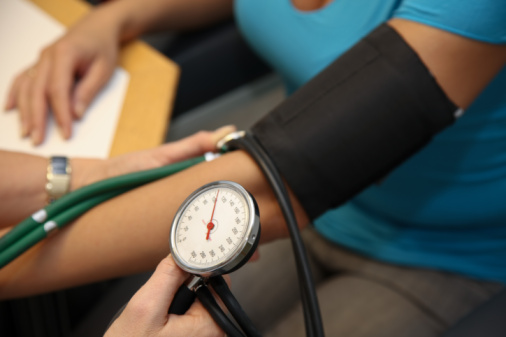
Lestonnac, a free health clinic in Orange County, is struggling to keep up with increasing demand. Clinic resources can no longer cover the needs of patients, 60 percent of whom are from Santa Ana. People who lost jobs that once provided them with decent health policies, and do not qualify for Medi-Cal, the insurance program for the poor, now rely on free and low-cost health care services at the clinic. Undocumented workers also turn to the clinic as their only option. Sometimes, it saves their lives.
The clinic has already seen 20,000 patients this year, 8,000 more than last year. Unlike federally qualified health clinics, which get some measure of financial assistance from the federal government, Lestonnac runs on volunteer doctors and donations. And money has been short.
“Although we try not to, we’ve been turning patients away,” said clinic director Ed Gerber said. They’ve stopped seeing the roughly 2,000 medical home patients who are there as regulars.
Forced to think out of the box, Gerber came up with the “Bridge to Care” program for them. The program allows patients with chronic or acute problems to be seen in mobile and satellite locations for up to six months, at which point Lestonnac asks them to show proof they have sought care elsewhere as well. This can include applying for Medi-Cal. If they can show that they looked but could not find care elsewhere, Lestonnac renews their eligibility for another six-month period while they continue searching.
Gerber also uses the mobile clinics to maintain a network of doctors and to help in the task of triaging patients. Mobile clinics, Saturday clinics, Satellite clinics in Tustin, Stanton and Los Alamitos are supported by numerous partnerships with nonprofit organizations and fundraising efforts.
Turning patients away is sometimes inevitable, but Gerber does his best to see that it is the exception and not the rule.
Patient education seminars were among the first thing he had to eliminate. “It just makes us cut in places that we don’t want to cut,” Gerber said.
Cutting programs like patient education is a double-edged sword, as it takes away an important tool in helping patients improve their health outcomes. It also keeps the rate of return constant for patients, rather than lowering it.
Lestonnac also not only takes those patients that federally qualified health clinics turn away, but offers them specialty care that FQHCs can not. Tasked with keeping the largest free clinic in the state open, Gerber gets no money or reimbursement.
“They say they’re all for helping people, but they’re not,” Gerber said. “The federal government is addressing nothing when it falls outside of federally qualified health clinics.”
Patient like Lorena Patino, gravely ill and pregnant, had nowhere else to go. Being turned away from Lestonnac would have been nothing short of a disaster for her. Patino had been suffering from an obstruction of the salivary gland until eating was almost no longer an option.
“It was so painful,” Patino said of trying to eat even the smallest meal. The base of her throat would swiftly swell up to the size of a golf ball upon trying to swallow any amount of food, she said.
Had Lestonnac denied her, her only alternative was to seek care in her native Mexico. However, the trip back to Mexico would be financially daunting for Patino, who works for minimum wage at a clothing factory.
“I spent days crying because I didn’t know what to do. I had no way to pay for the trip back to Mexico,” Patino said. “Yet I have nothing else here. I am so very thankful to Lestonnac for what they did for me.”
Lestonnac was also Rosa Moreno‘s only hope. The 36-year old mother of 6 had a mass in her neck that had needed a biopsy for some time. Lestonnac performed the service for her. If not for the free medical care, Moreno, who is uninsured, said she would have just left the mass alone.
“Two of my children are small and I don’t work,” Moreno said. Asked what she would have done about the growing mass, she simply replies “I don’t know.”
Pediatrician Dr. Greta Gillman, who volunteers at Lestonnac twice a week, says such grave conditions among Lestonnac’s patients are not surprising, and all the more reason for government to realize the need for helping free clinics.
Chronic health conditions start early, she noted.
“Many of the teenagers coming here have lived with conditions that have gone undiagnosed for a long time,” Gillman said. A great many of them, she’s learned, are the oldest of the family and have come across the border with parents who have been consumed with moving their families to the states for a better life.
“They’ve had so many problems, that medical care fell somewhere at the bottom of the list,” Gillman says, adding that being behind on immunizations is one of the common culprits underlying their problems.
Another common problem – it’s hard to get necessary medications. The illnesses she treats frequently require drugs that are not manufactured generically.
“They get seen, but what happens when they can’t afford to buy the medicine?” Gillman asked.
Gerber wishes that the work of free clinics, the last resort for patients with nowhere to go, wasn’t so overlooked in discussions of health care reform.
“A little can go a long way,” Gerber said. “Everyone wants to invest in these big infrastructures, but something as simple as this can serve a lot of people.”





